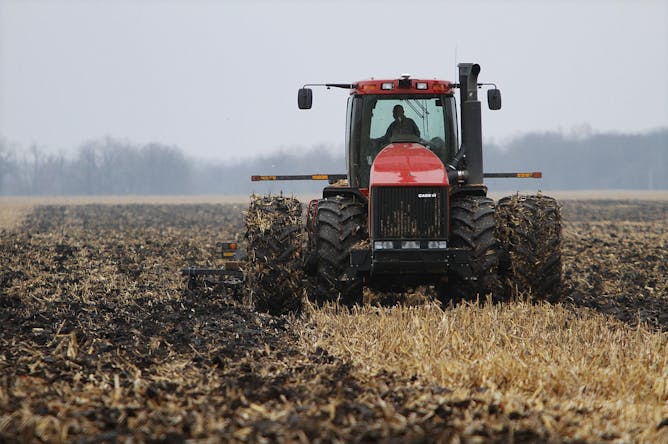|
It’s the perfect day for a primer on influenza given a good portion of our newsroom has been grappling with flu-like ailments all week. And today’s piece in The Conversation Canada by Manish Sadarangani, an assistant professor at the University of British Columbia who specializes in infectious diseases, tells you everything you need to know about the difference between colds and various flu strains, flu vaccine and who should get the flu shot. Required reading as the snow begins to fly and flu season descends upon us.
Farmers preparing for winter might want to consider some new techniques to help keep carbon in the soil and out of the atmosphere and in doing so, help combat climate change. “First and foremost, we need to disturb soil less,” writes David Burton, a soil scientist at Dalhousie University. “The advent of no-till and reduced tillage methods have allowed us to increase the carbon content of soils.”
Confused about blockchain technology? It may help to read our compelling piece today on how the emergent technology has a surprising link to the days of medieval treasuries, written by Victoria Lemieux, an associate professor of archival science at UBC.
And finally, if you’re looking to stream a classic movie this weekend, may we suggest “Contact.” It’s the 20th anniversary of the science fiction film that was adapted from Carl Sagan’s novel of the same name. Christopher Douglas, a professor of American Literature and Religion at the University of Victoria, has provided a long read about the film and the novel and how it was ahead of its time on political issues like creationism.
Regards,
|

Every year in Canada, there is an average of 23,000 cases of lab-confirmed influenza, 12,000 people who need to be admitted to hospital and 3,500 flu deaths.
(Shutterstock)
Manish Sadarangani, University of British Columbia
As influenza season begins in North America, many people wonder whether to get a flu shot. Our expert delves into the pros and cons of the vaccine and how it works.
|

More carbon stays in the soil when farmers leave their fields alone between harvesting and planting.
(AP Photo/Seth Perlman)
David Burton, Dalhousie University
The Paris climate agreement aims to limit global warming to 2C above pre-industrial levels. We need to curb greenhouse gas emissions, but we can also make gains with carbon farming.
|

Blockchain technology, in which real-world assets are symbolically represented by digital objects, harks back to medieval times when helmets, swords, and other items represented land and other valuables.
(Shutterstock)
Victoria Lemieux, University of British Columbia
Blockchain is a hot, innovative technology
— with roots in medieval treasuries.
|

Jodie Foster in Contact.
Google Images
Christopher Douglas, University of Victoria
It is the 20th aniversary of Carl Sagan's sci-fi film, Contact - and a great time to celebrate its legacy and revisit its main premise of Science vs. Religion.
|
Environment + Energy
|
-
Matthew Wills, University of Bath
The mass extinction of the dinosaurs was down to the location of the asteroid's impact and the kind of rocks it landed on.
|
|
Business + Economy
|
-
Elizabeth C. Tippett, University of Oregon
Companies have long tended to protect rather than punish high-profile harassers. That may change as the #MeToo movement inspires more women to speak out.
|
|
Science + Technology
|
-
Catherine WIlcox, Manchester Metropolitan University
Longer doesn't always mean better. But it's not the end of the world, either.
|
|